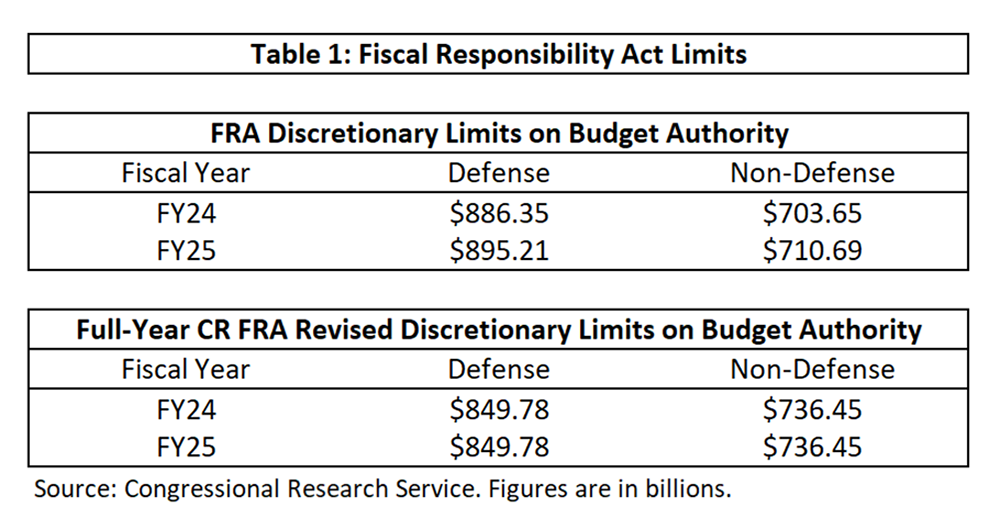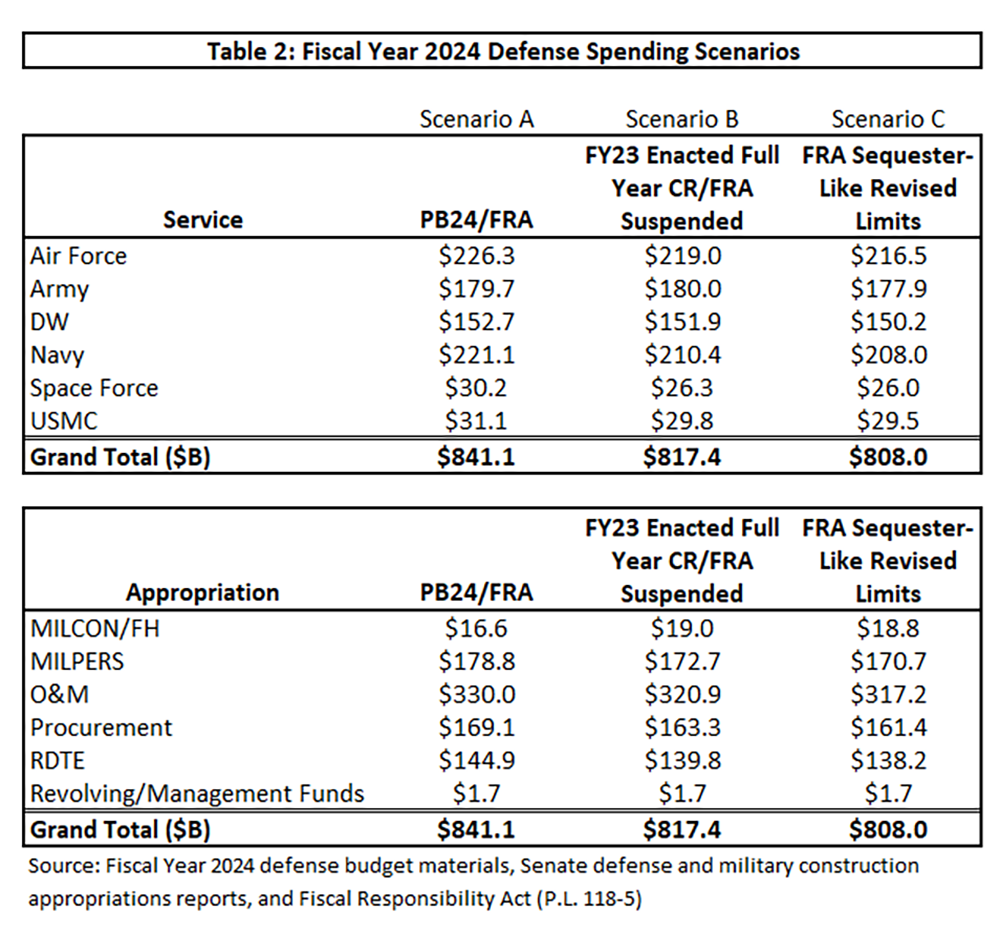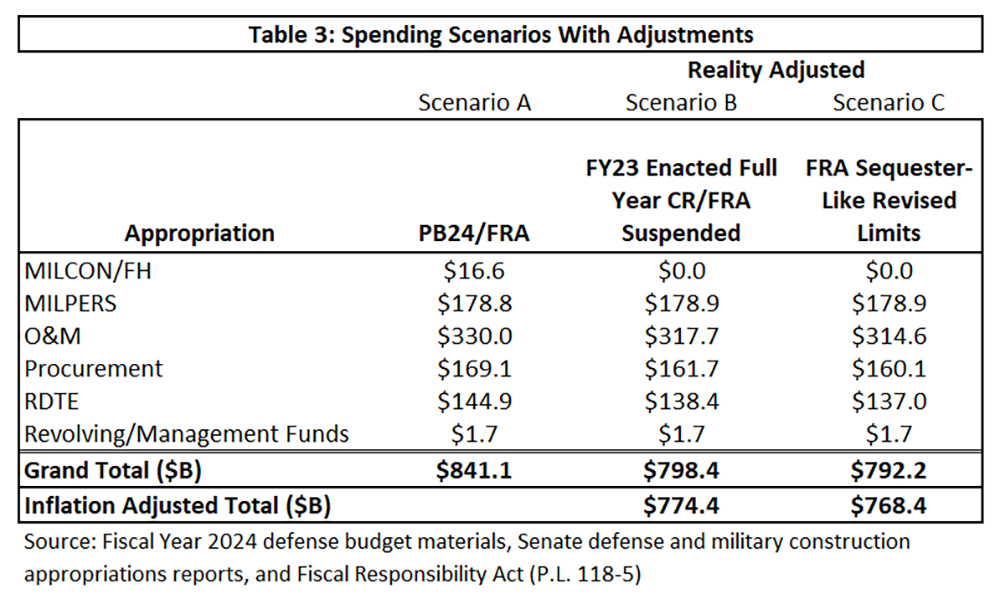Budget Endgame Scenarios: From Acceptable to Apocalypse
August 28, 2023
Come the start of September, the US Congress will return to work, and among their highest priority jobs will be settling the next budget. In this new analysis, Elaine McCusker and John Ferrari of the American Enterprise Institute lay out a trio of likely scenarios for the upcoming negotiations, including one they deem the “doomsday” scenario for DoD.
Important work on fiscal year 2024 defense authorization and appropriations bills has been completed. Strategic and tactical issues are teed up and ready for negotiation to produce final bills that will serve the nation’s security and those who provide it. But, will it all be a waste of time, leading to a political budget impasse that damages the nation’s military competitiveness and global leadership… again?
With only 11 joint legislative days remaining until the end of the fiscal year, it is a good time to assess potential outcomes for this year’s budget. Despite recent debt ceiling negotiations providing a glimmer of hope that regular order for appropriations could be possible, signs are now trending in the opposite direction. Once again the defense budget faces the risk of a continuing resolution that would put our future military competitiveness and security at risk by freezing all new starts and locking spending in at FY23 levels.
But, unlike previous years when continuing resolutions (CRs) seemed inevitable, this year comes with additional consequences: An initial short-term CR might be among the less destructive outcomes on the table, as a doomsday scenario is lurking that would result in an effective 8.6 percent cut from requested defense funding levels for FY24. And this does not account for the ultimate failure, a potential government shutdown, for which even the preparation is costly.
Among the many potential budget outcomes, three scenarios are worth examining. The first (Scenario A– PB 2024) is that the Fiscal Responsibility Act (FRA) budget caps survive and by Sept. 30 (or, with a short-term CR, Dec. 31), Congress passes all twelve appropriation bills — or an omnibus package of bills — that the president will sign.
The second (Scenario B – Full-Year Continuing Resolution (CR)/2023 Levels) is that Congress agrees, at some point before the end of the calendar year, to pass a full-year continuing resolution at FY23 levels, while repealing the revised sequester-like reductions in the current debt ceiling deal.
The final scenario (Scenario C – FRA Sequester) is the doomsday scenario for the Pentagon. In this scenario, and assuming there is no government shutdown, the appropriations bills are not passed by the end of the calendar year, Congress leaves the FRA sequester provision in place, and national defense spending is cut to the statutory cap of $849.78 billion (Table 1).

(Provided by the authors)
Under this third scenario, about $42 billion of defense discretionary funding would go to non-Department of Defense (DoD) agencies, leaving about $808 billion for DoD, much less than the $841 billion requested by the President and allowed by the budget deal. At the macro-level, using simple math, Table 2 depicts how funding would be allocated by service and by appropriation for the three scenarios.

(Provided by the authors)
The doomsday scenario (Scenario C) is even worse than the simple math indicates for three very important reasons. First, the 5.2 percent military and civilian pay raise is mandatory, so the funding would actually have to be resourced from within the caps to pay the estimated $15 billion needed for the military pay raise, while the civilian pay raise, estimated at roughly $10 billion, would come at the expense of readiness within the operating accounts. Second, military construction cannot be funded with a continuing resolution, therefore those funds disappear under Scenarios B and C. And finally, with inflation running about 3% per year, that effectively cuts another $24 billion in spending power below the FRA caps. Taking those three issues into account yields the following:

(Provided by the authors)
This doomsday scenario results in an actual defense budget that is 8.6 percent below the PB 2024 request or nearly $50 billion below current spending in a single year. It should also be noted that under the FRA, the required cuts do not need to start until April 2024, , packing the budget reductions into an even smaller window of execution.
Timing is very important. There is little chance Congress can pass appropriations by the end of the fiscal year and as such, they will have to rely on a series of short-term continuing resolutions. And, if history is any guide, these will go until the December holiday recess. During this October-December timeframe, DoD would be spending at the Scenario B reality adjusted level, losing close to $17 billion in buying power during just those three months. And, keep in mind, the White House has also submitted a $40.1 billion supplemental, of which $13.1 billion represents DoD requirements, further straining cash flow at the same time buying power is dwindling.
If Scenario C occurs and DoD loses $50 billion during FY24, a continuing resolution for FY25 would likely follow, given that it is an election year. That will exponentially compound the national security deficit, putting the United States in similar circumstances to those under the Budget Control Act from which we have never fully recovered.
With a war in Europe and continued escalating tensions with China, failing to approve budgets on time and at the FRA-agreed upon levels could be catastrophic for the readiness of the force. Maybe, if the appropriations are not completed on time, Congress should not get paid rather than taking our national defense hostage. That would be one reform on which most of America might agree.
Read more at Breaking Defense.


